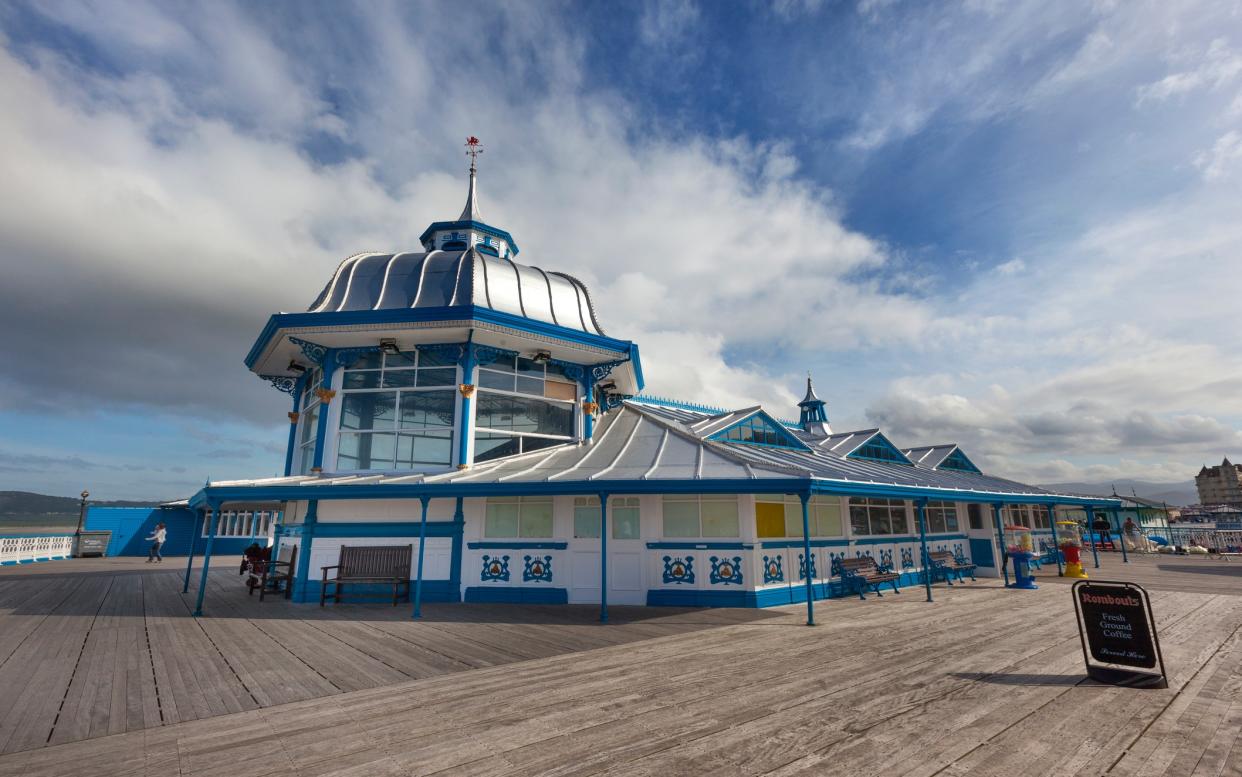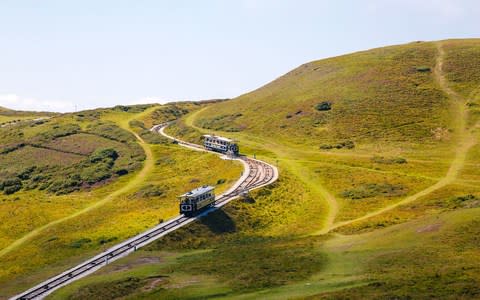How the 'blue-rinse brigade' saved Llandudno

I’m on the hunt for William Windsor’s family. So naturally, I’m scrabbling around in tangles of gorse on top of a limestone outcrop known as the Great Orme in North Wales.
Well, where else would you go to find such an esteemed drove of goats?
I’m too late to meet William himself, so my guide Amanda, a North Walian native of Llandudno, informs me. He’s currently in retirement at Whipsnade Zoo after a controversial stint as official military mascot of the Royal Welsh regiment.
Here on this wild outcrop overlooking the coastal town below, a great national military tradition takes place. Dating back to the time when a wild goat walked onto the battlefield during the Battle of Bunker Hill in the American War of Independence in 1775, William, like many cashmere goats before him selected for the role of mascot, was given the rank of lance corporal.
But after a disciplinary hearing, he was brutally bumped down to fusilier. His crime? Trying to butt a drummer during a parade in Cyprus to celebrate the Queen’s 80th birthday.

William’s extended family, however, all descendants of a goat given to Queen Victoria by the Shah of Iran, don’t appear to have suffered from William’s lack of decorum. Indeed, his successor, Shenkin IV, is currently posted at the regiment barracks in Cardiff.
I stand and watch as the rest of his family, spared the rigours of duty, nimbly trot between ancient limestone paving, blackthorn and the odd hawthorn tree. The 360-degree view from the Orme’s summit is simply perfect for goats of all ages, and big kids like me, and you can easily spend hours here sauntering and meandering, with the Irish Sea, Snowdonia and the genteel sprawl of Llandudno all around you.
“We should thank the blue rinse brigade really”, Amanda admits as we take the San Francisco-style Great Orme Tramway – the last remaining cable-operated street tramway in the UK – past the remnants of an ancient copper mine and a dry toboggan run down to Llandudno Bay.

Lined with cream-coloured, slate-roofed Victorian villas, it looks, on a cloudless day, to be an exact replica of the kind of over-bleached seaside postcard that would have been sent by one of the aforementioned blue rinsers to a sister in Peebles in around 1967.
“They kept coming here by the coach load in the low years when other seaside towns were struggling,” Amanda adds. “It meant that Llandudno didn’t decline quite like some of the other coastal towns in North Wales.”
Llandudno does indeed still have a prosperous air to it. The pier, in bold blue and white colours, stays just the right side of chintzy. Yes, there are the more traditional hallmarks of a British seaside town – two small amusement arcades, candy floss and a stall selling individualised ‘On Your Birthday’ historical events scrolls, including your ‘probable’ date of conception, which is doing a roaring trade – but there’s a serene air to the town too.

Stag and hen parties are non-existent, though the microbrew pub Tapps, just opposite the Royal Antediluvian Order of Buffalos lodge on Madoc Street, and posh chippie Enoch’s, which serves ‘en papillote’ fish wrapped in parchment, were, on my visit, full of happy, wind-swept locals reclining after their bracing strolls along the yucca and Anglesey palm-fringed seafront.
The atmosphere of unruffled pomp is largely down to the aesthetic rules laid down by the Mostyn family who own a large chunk of the town. It was EMI Mostyn who, back in the mid-19th century as MP for the town, established its reputation as a refined seaside resort for the burgeoning middle classes by pushing through an Act of Parliament to control the town’s development. Today, his family keep up the town’s stately look and have banned all commercial activity from the seafront promenade.
The only money-making enterprises that have made it to the front are the hotels, of which St. George’s is the grande dame, dating back to 1854 (rooms from £128 bed and breakfast).
Only a professional misanthrope could fail to be charmed by Llandudno’s stately yet unpretentious charms and it turns out that I’m not the only person reluctant to leave.
“When Shenkin IV was selected as the new Welsh Regiment mascot, he did a runner,” one local at Cottage Loaf (the-cottageloaf.co.uk) tells me while walking with his pint of Welsh Pride beer out into the pub’s sun dappled garden.
“It took soldiers nearly a month to catch him up on the Great Orme. Poor fella just didn’t fancy getting drafted, I guess. No place like the seaside is there?”

Essentials
A walk with Amanda Whitehead up the Great Orme can be booked through walesbestguides.com.
Virgin West Coast run direct trains from London Euston to Llandudno Junction daily (return fares from £69; virgintrains.co.uk).


